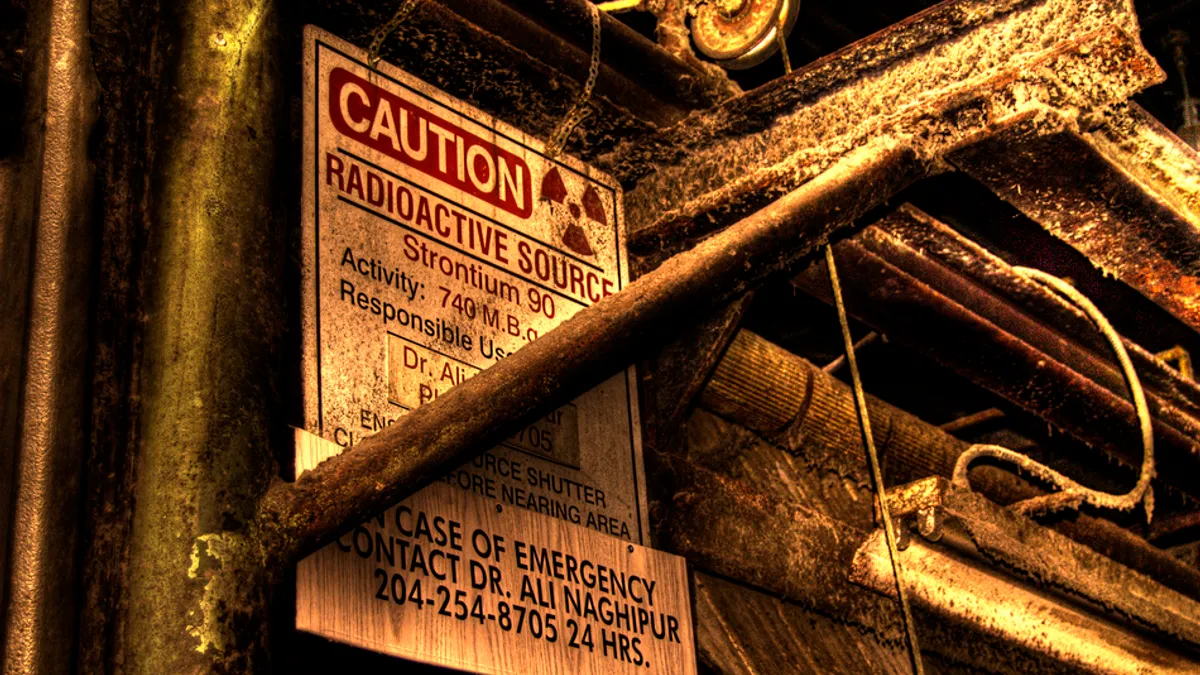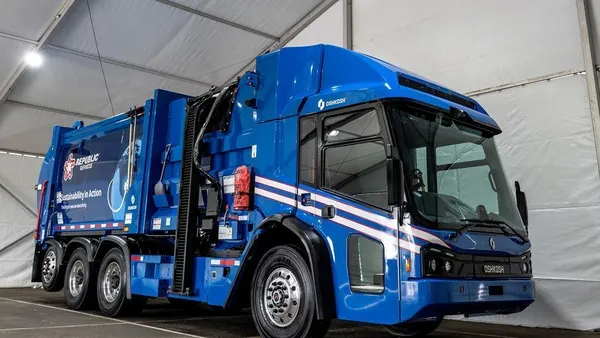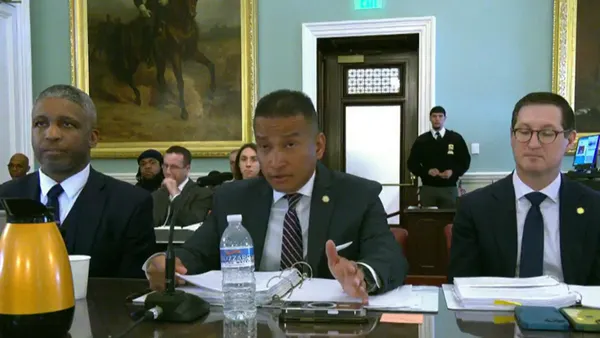Dive Brief:
- The Department of Energy granted the Penn State Nuclear Energy University Program $800,000 to develop a method for recycling nuclear fuel. The process entails removing radioactive elements from nuclear waste and ultimately reducing total waste generated through nuclear fission.
- The group faces a challenge: isolating and removing two of the radioactive elements, cesium and strontium, according to Penn State assistant professor Hojong Kim, the project’s principal investigator. Currently, used nuclear fuels are fed into an electrolyte solution so some elements can be isolated, removed and reused. However, when certain substances interact with the solution, they render it unusable for nuclear fuel recycling.
- The research is focusing on a solution to enable certain substances to be isolated.
Dive Insight:
Cleaning nuclear waste has been a buzzing topic in the industry, as health concerns involved with nuclear waste continue to spread across the nation. Earlier this month, Scotland's Environmental Research Institute announced methods of using whiskey grains, coffee grounds, and seaweed to clean radioactive waste.
"The easiest way to address [the challenge of isolating certain substances] may include refreshing the electrolyte bath. But this will result in an excessive amount of useful electrolyte being wasted and increased operating costs. Furthermore, these electrolytes need to be mixed with glasses for safe, long-term nuclear waste disposal, creating a large volume of nuclear waste," said Kim to Penn State News.
To address the problem, the research team will investigate electrochemical separation, which attracts specific elements based on their unique properties. They hope to remove just the unnecessary substances while leaving the remainder of the solution intact.
"This would let us keep the electrolyte much longer, create less waste and separate out the nuclear waste for better management," said Kim.













